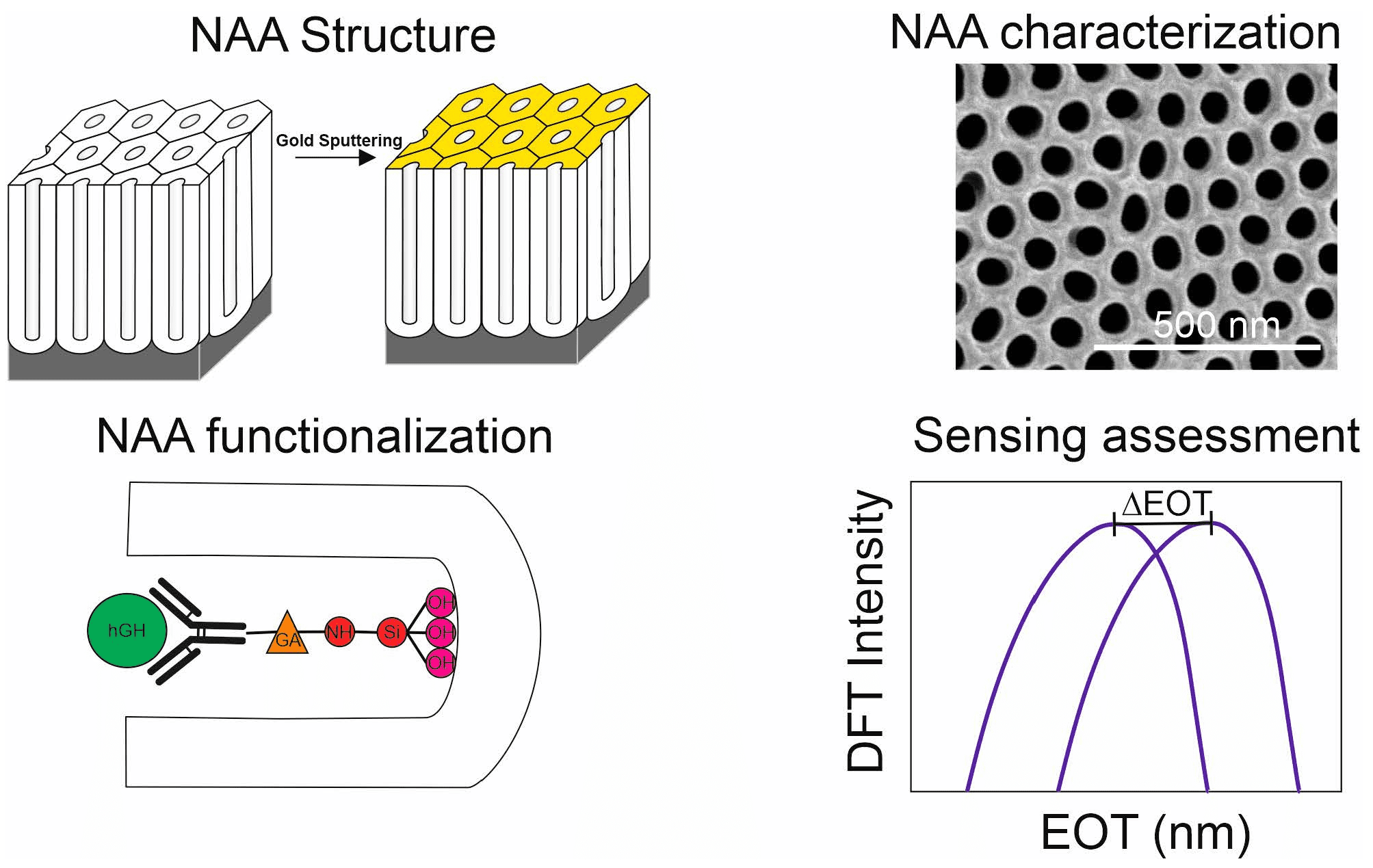Real-Time Detection of Human Growth Hormone Based on Nanoporous Anodic Alumina Interferometric Biosensor
Human growth hormone (hGH) is a polypeptide hormone that is synthesized and secreted by the anterior pituitary gland, whose excess is linked to acromegaly-causing pituitary adenomas while deficiencies are linked to disorders including short stature and Turner’s syndrome. This study investigates the real-time biosensing of hGH using a microfluidic optical biosensor based on reflectometric interferometry Fourier spectroscopy (RIFTS). The biosensing platform is based on a monolayer of nanoporous anodic alumina (NAA) fabricated following the two-step anodization method to produce pore sizes between 30 and 35 nm. The sensitivity of the nanostructure is improved by increasing the effective surface area by widening the pores to about 45 nm. NAA structures are then functionalized to make them selective to hGH. The sensing performance of the system shows a linear detection range from 12.5 mu g/mL to 100 mu g/mL with a detection limit of 10.6 mu g/mL. This biosensing platform demonstrates the capability to detect high concentrations of human growth hormone using a cost-effective, fast, and portable biosensing system.

Cantons, J.; Acosta, L. K.; Formentin, P.; Ferré-Borrull, J.; Bachhuka, A.; Marsal, L. F.
Sensors 2025, 25 (4), 1021
DOI:
10.3390/s25041021

Let's create a brighter future
Join our team to work with renowned researchers, tackle groundbreaking
projects and contribute to meaningful scientific advancements



















